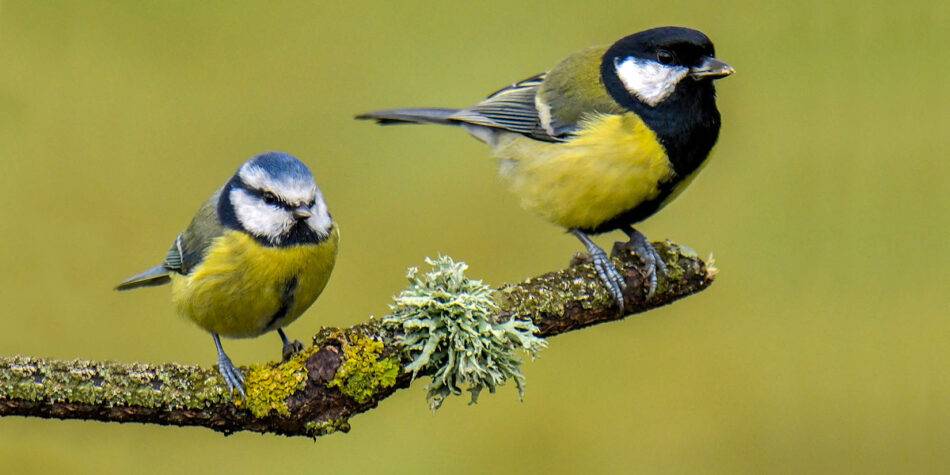Last Updated on January 8, 2024 by Dog Lover
The Yorkshire Canary: A Golden Songbird from England’s Heart
Imagine, if you will, a melody spun from sunlight, woven through emerald valleys and serenaded by the wind.
A symphony of tinkling bells and warbling flutes, cascading from a feathered jewel perched on a dew-kissed rose.
This, my friends, is the song of the Yorkshire canary, a living sunbeam with a voice that stirs the soul.
Hailing from the verdant bosom of Yorkshire, England, this mesmerizing songbird is more than just a pet – it’s a cultural icon, a feathered ambassador of the region’s rich history and resilient spirit.
For centuries, its golden trills have echoed through cottages and grand manors alike, weaving themselves into the tapestry of Yorkshire life, and today, we embark on a journey to unlock the secrets of this melodic marvel.
But before we delve into the canary’s captivating song, let’s unravel its fascinating past.
Our feathered friend’s lineage stretches back to the vibrant canary islands, where wild ancestors sang amidst volcanic landscapes.
It was intrepid sailors who first brought these sun-kissed songsters to Europe in the 16th century, their melodies enchanting nobility and commoners alike.
Yorkshire, with its burgeoning coal mines and textile mills, proved fertile ground for the canary.
These industrious birds, with their sensitive respiratory systems, became living barometers, warning miners of dangerous gasses before human senses could detect them.
It was a bond forged in the very heart of Yorkshire’s working class, a testament to the canary’s resilience and the deep connection between man and bird.
But the canary’s impact transcended the mineshafts.
Its captivating song, once a symbol of danger, transformed into a cherished companion, bringing joy and solace to countless homes.
Breeders, with their keen eyes and dedication, refined the canary’s voice, creating exquisite variations like the Border fancy with its cascading melody and the Norwich with its sweet, flute-like tones.
And now, let us finally lose ourselves in the magic of the Yorkshire canary’s song.
It’s a tapestry of interwoven notes, each phrase a kaleidoscope of emotions. There’s the bubbling, exuberant trill, bursting with sunshine and joy.
Then comes the tender, melancholic sigh, a whispered secret shared on the wind.
And ever present is the underlying strength, a resolute melody that echoes the spirit of Yorkshire itself.
But the Yorkshire canary is more than just a pretty voice.
These intelligent birds thrive on interaction, learning tricks and even mimicking human speech.
They’re playful companions, flitting through their cages with a joyous chirp, always eager for a bit of attention and a sunflower seed or two.
Owning a Yorkshire canary is an experience, not just an obligation.
It’s a journey into the heart of Yorkshire itself, a connection to its past and a celebration of its enduring spirit.
So, if you’re seeking a feathered friend who will fill your home with sunshine and your heart with song, look no further than the Yorkshire canary.
This is just the beginning of our exploration of this golden songbird.
In the following sections, we’ll delve deeper into the Yorkshire canary’s history, care requirements, breeding secrets, and even tap our feet to some of its most famous melodies.
So, buckle up, dear reader, and prepare to be enchanted by the Yorkshire canary, a legend with wings.
Unveiling Yorkshire’s Canary Legacy: From Mineshafts to Melodies
The Yorkshire canary’s story is intricately woven with the tapestry of Yorkshire itself.
Its song, once a harbinger of danger in the depths of coal mines, became a cherished melody echoing through grand manors and humble cottages alike.
Let’s embark on a historical journey to uncover the rich heritage of this remarkable bird.
A Song in the Darkness
Imagine descending into the gloom of a Yorkshire coal mine, the air thick with dust and danger.
It was here, amidst the ominous creak of timbers and the rhythmic clang of pickaxes, that the canary played a life-saving role.
These sensitive songbirds, with their delicate respiratory systems, would be the first to succumb to the deadly gases lurking in the tunnels, their sudden silence serving as a chilling alarm for the miners.
From Barometer to Beloved
The bond between Yorkshire miners and their feathered companions ran deep.
Miners often named their canaries after loved ones or fellow workers, creating a personal connection that transcended their role as safety sentinels.
As safety standards improved, the canary’s role shifted. Its captivating song, once a stark warning, evolved into a source of solace and joy in the miners’ homes.
Refinement through Passion
Yorkshire’s resourceful spirit extended to the realm of canary breeding.
Skilled breeders, with discerning ears and an unwavering dedication, honed the birds’ voices, cultivating distinct vocal styles.
The Border fancy, with its fast, intricate trills, and the Norwich, with its mellow, flute-like tones, emerged as testaments to this meticulous artistry.
Beyond Yorkshire
The popularity of Yorkshire canaries soared beyond the region’s borders.
Queen Victoria herself was a fervent admirer, keeping a flock at Windsor Castle.
Their melodious voices graced drawing rooms and parlors across England, earning them a place in the heart of Victorian society.
A Legacy Enduring
Even today, the Yorkshire canary’s legacy lives on.
Canary fanciers around the world dedicate their lives to preserving and enriching the breed.
Shows and competitions celebrate the beauty and skill of these feathered virtuosos, ensuring that the unique song of the Yorkshire canary continues to echo through generations.
This is just the beginning of our exploration. Stay tuned as we delve deeper into the world of the Yorkshire canary, uncovering the secrets of their care, breeding, and the captivating language of their song.
Your Feathered Friend Awaits: Choosing and Caring for a Yorkshire Canary
Welcoming a Yorkshire canary into your home is an invitation to share your life with a feathered melody maker.
But before you bring your new friend home, let’s explore the essentials of choosing and caring for these delicate songbirds.
Finding the Perfect Finch
Selecting your Yorkshire canary is a crucial step.
Reputable breeders who prioritize the bird’s health and well-being are your best bet.
Look for canaries with bright eyes, clean feathers, and active chirping. Avoid birds with signs of lethargy or respiratory distress.
Building a Cozy Haven
Your canary’s cage should be a spacious haven, ideally at least 30 inches long, 18 inches wide, and 18 inches high.
Multiple perches of varying thicknesses and textures will encourage exercise and climbing.
Food and water bowls should be easy to clean and refill, and toys like swings and mirrors can provide enrichment.
A Symphony of Needs
Yorkshire canaries thrive on a balanced diet.
High-quality seeds, fresh fruits and vegetables, and a cuttlebone for calcium are essential.
Clean, fresh water should always be available. Regular cage cleaning and good ventilation are crucial for maintaining a healthy environment.
A Shower of Care
Yorkshire canaries benefit from regular playtime outside their cage.
Supervised interaction and gentle handling will strengthen your bond and prevent boredom.
Daily misting with lukewarm water helps maintain feather health and keeps your little friend refreshed.
The Language of Love
Don’t underestimate the power of your voice!
Speak softly and kindly to your canary, sing along with its melodies, and whistle playful tunes.
These interactions form the foundation of a loving relationship, ensuring your bird feels secure and cherished.
Remember, welcoming a Yorkshire canary is a commitment, not just an impulse.
By providing proper care, attention, and love, you’ll be rewarded with years of companionship and the enchanting music of this avian masterpiece.
In the next chapter, we’ll delve into the fascinating world of breeding Yorkshire canaries, exploring the intricacies of preserving this feathered legacy and creating your own flock of melodious friends.

The Art of Avian Alchemy: Breeding Yorkshire Canaries
For some, owning a Yorkshire canary is a joy; for others, it’s a passion that extends to the delicate art of breeding.
If you’re drawn to the prospect of perpetuating the lineage of these feathered virtuosos, let’s explore the intricacies of Yorkshire canary breeding, a process as rewarding as it is demanding.
A Matter of Choice
Selective breeding is key to maintaining the Yorkshire canary’s unique song and phenotype.
Choose breeding pairs with exceptional qualities, paying close attention to song clarity, feather quality, and overall health.
Ideally, select birds from different bloodlines to minimize the risk of genetic defects.
Building the Nest
Provide your breeding pair with a spacious breeding cage equipped with a nesting box.
Fill the box with soft materials like shredded paper or coconut fibers, allowing your feathered architects to craft their cozy haven.
Courtship and Coupling
Observe your canaries closely.
Their chirping will become more playful and frequent as they bond, and the male may begin feeding the female as a courting gesture.
Once mating occurs, the female will lay clutches of three to five eggs, usually spaced a day apart.
A Touch of Patience
Incubation takes around 13 days, a period of watchful waiting for the breeder.
Avoid disturbing the nesting pair during this crucial time, but ensure they have access to fresh food and water.
Hatching Hope
The arrival of tiny, featherless chicks marks a moment of triumph.
The female will diligently care for her brood, while the male provides food and sings encouraging melodies.
After around two weeks, the chicks will begin venturing out of the nest, their fledgling chirps a symphony of newly awakened life.
Raising Champions
Weaning the chicks at four to five weeks requires a gradual shift from soft egg food to a seed-based diet.
Provide ample space for exercise and introduce shallow baths for feather maintenance.
As the young canaries mature, their unique voices will begin to emerge, offering glimpses of their future potential.
The Reward of Legacy
Breeding Yorkshire canaries is more than just creating new life; it’s about safeguarding a treasured legacy.
With dedication and careful selection, you can contribute to the continuation of this remarkable breed, ensuring its mesmerizing song continues to captivate generations to come.
However, breeding is not for everyone. It requires careful planning, dedication, and an understanding of the potential risks involved.
Consider your resources, knowledge, and commitment before embarking on this journey.
Now, let’s turn our attention to the very essence of the Yorkshire canary – its captivating song.
In the next chapter, we’ll delve into the language of melody, understanding the hidden meanings behind each trill and warble.
Deciphering the Symphony: Understanding the Language of Song
The Yorkshire canary’s song is more than just a beautiful melody; it’s a language brimming with emotion and nuance.
Learning to decipher this avian tongue unlocks a deeper connection with your feathered friend, allowing you to understand their moods and intentions.
A Tapestry of Tones
Each canary’s song is unique, a complex tapestry woven from a variety of vocalizations.
The basic building blocks include calls, twitters, rolls, and whistles, each carrying its own significance.
The Pulse of Emotions
The speed and intensity of the song often reflect the canary’s mood.
Happy birds tend to sing fast, intricate melodies, while slower, softer vocalizations might indicate contentment or even boredom.
Loud, sharp calls can signal alarm or distress, while playful twitters often denote curiosity or a desire for interaction.
Learning the Lexicon
Over time, you’ll begin to recognize specific patterns and sequences in your canary’s song.
A high-pitched trill might be reserved for greeting you in the morning, while a mournful sigh could indicate a desire for attention.
Pay attention to your bird’s body language and the context of the song to glean deeper meaning from its melodies.
The Power of Communication
Singing isn’t just about expression; it’s also a way for canaries to communicate with each other.
Males often sing elaborate songs to attract mates, while chicks chirp to signal hunger or discomfort.
Understanding these vocal exchanges can help you better care for your birds and foster a stronger bond.
Embrace the Mystery
While we can decipher the broad strokes of the canary’s song, some of its subtleties remain a beautiful mystery.
This adds to the charm of these feathered songbirds, reminding us that the language of nature is often spoken in whispers and melodies, waiting to be discovered by those willing to listen.
In the next chapter, we’ll explore some of the most famous Yorkshire canary songs, tracing their historical significance and appreciating the unique artistry embodied in each note.

Melodies in Time: Unforgettable Yorkshire Canary Songs
The Yorkshire canary’s song has resonated through centuries, weaving itself into the fabric of history like a golden thread.
Each melody captures a moment, a mood, a story waiting to be heard.
Let’s embark on a journey through some of the most unforgettable Yorkshire canary songs:
1. The Colliers’ Fancy: This melancholic yet strangely beautiful tune originated in the Yorkshire coal mines. Its low, flute-like notes echoed the miners’ anxieties and hopes, a poignant reminder of the canary’s role as both sentinel and companion in the dark depths.
2. The Roller: Named for its characteristically rapid, rolling trills, this lively song burst forth from grand manors and cottage windows alike. Its exuberance and intricacy reflected the Victorian fascination with virtuosity, showcasing the Yorkshire canary’s vocal prowess.
3. The Norwich: In contrast to the Roller’s frenetic energy, the Norwich melody unfolds with a gentle grace. Its soft, flute-like tones evoke pastoral landscapes and quiet contemplation, a testament to the versatility of the Yorkshire canary’s voice.
4. The Border Fancy: This complex arrangement is a kaleidoscope of sounds, weaving cascading trills, delicate whistles, and playful chirps into a tapestry of avian artistry. Its origins remain shrouded in mystery, but its sheer beauty has captivated listeners for generations.
5. The Show Song: This dynamic melody, reserved for competition settings, pushes the boundaries of the Yorkshire canary’s vocal repertoire. From thunderous calls to whispered tremolos, the Show Song is a display of vocal acrobatics designed to impress judges and audiences alike.
Each of these songs, and countless others, carry a piece of Yorkshire’s history within its notes.
They tell stories of resilience, joy, and the unwavering spirit of a region that found solace and celebration in the song of a tiny, feathered friend.
But the music doesn’t stop here. With every new generation of breeders and enthusiasts, the Yorkshire canary’s song evolves, adapts, and continues to captivate our hearts.
It’s a living legacy, a testament to the power of beauty and the enduring bond between humans and the natural world.
So, the next time you hear a Yorkshire canary sing, pause for a moment. Close your eyes and listen.
You might just hear the whispers of history, the echoes of love, and the promise of a melody that will continue to enchant for generations to come.
This concludes our exploration of the Yorkshire canary, a feathered jewel whose song echoes with history and beauty.
We hope you’ve enjoyed this journey and gained a deeper appreciation for this remarkable bird.
Remember, owning a Yorkshire canary is more than just a pet; it’s an invitation to immerse yourself in a world of music, legacy, and the profound joy of sharing your life with a feathered friend.
Conclusion: A Golden Melody for Your Soul
From the depths of coal mines to the gilded cages of grand manors, the Yorkshire canary has weaved its song through the tapestry of England’s history.
Owning this feathered wonder is not just about acquiring a pet; it’s about welcoming a living piece of cultural heritage into your home.
As the sunbeams dance on its golden feathers and its melody fills the air, you become part of a legacy that stretches back centuries, a legacy of resilience, passion, and the profound joy found in music shared across species.
So, if you’re seeking a companion who will fill your life with sunshine and your heart with song, look no further than the Yorkshire canary.
Open your door, open your heart, and prepare to be enchanted by a melody that will linger long after the last note fades.
FAQs
Do Yorkshire canaries talk?
While these intelligent birds can mimic some human sounds and words, they are not true mimics like parrots. However, they can learn to whistle familiar tunes and even respond to basic commands with specific chirps.
How much does a Yorkshire canary cost?
The price of a Yorkshire canary can vary depending on its age, pedigree, and vocal quality. Generally, expect to pay anywhere from $50 to $200 or more for a healthy bird.
Can Yorkshire canaries live with other birds?
While Yorkshire canaries can coexist peacefully with other small birds like finches, it’s best to house them in separate cages unless they are introduced gradually and closely monitored.
Are Yorkshire canaries good singers?
All Yorkshire canaries sing, but their vocal potential varies. With proper care and training, even ordinary birds can develop beautiful melodies. However, breeding birds with strong vocal lines will increase the chances of your canary becoming a champion singer.
Where can I learn more about Yorkshire canaries?
There are several reputable resources available online and in print. Here are a few suggestions:
- The Yorkshire Canary Club: http://yccuk.com/
- The National Avicultural Society: https://isbgfh.com/
- “The Complete Yorkshire Canary” by David Alderton
Remember, welcoming a Yorkshire canary is a commitment.
Be prepared to provide proper care, attention, and a loving environment for your feathered friend.
In return, you’ll be rewarded with years of companionship and the enchanting music of a soul that sings on wings of gold.

















